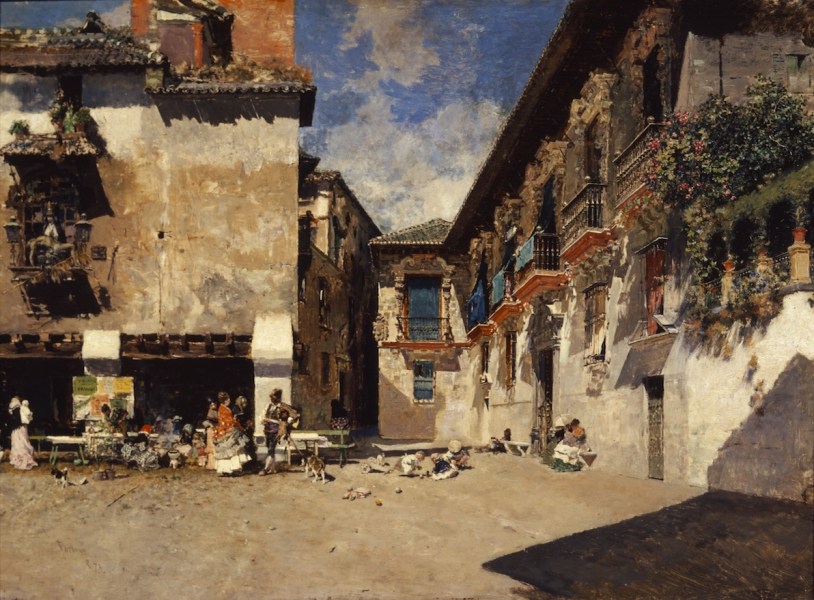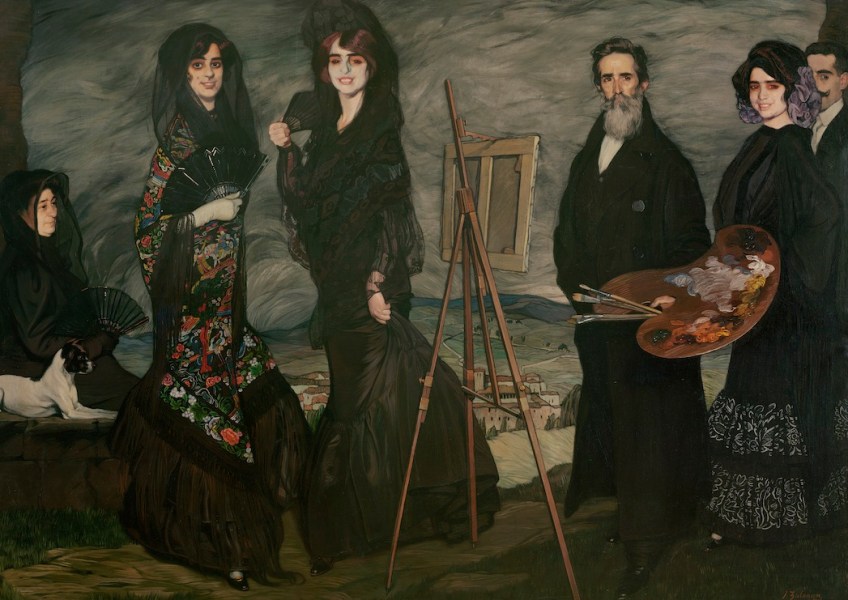Brandon Ruud—
The catalogue for the exhibition Americans in Spain: Painting and Travel, 1820–1920 was a labor of love, a treat to produce, and, especially, a visual feast thanks to the number of objects and the generosity of so many lenders willing to include some of their greatest masterpieces. The book’s production was tied to my last visit to Spain and, not surprisingly, to my own personal and professional experience of the global pandemic.
In early March 2020, I traveled to Spain to finalize research, secure loans, and begin color proofing many of the images in the catalogue, particularly paintings that had been hidden away or unavailable during my previous visits. In particular, I went searching for traces of Mary Cassatt. Among the many highlights of the exhibition and catalogue are the paintings that Cassatt produced during her 1872–73 visit to Spain, which included an extended stay in Seville. Of special interest was Spanish Girl Leaning on a Window Sill, a newly discovered canvas that she left behind and one of two Cassatt paintings uncovered by Manuel Piñanes García-Olías, a Sevillian now living in Madrid.

Its attribution was confirmed by Betsy Boone—one of my fellow catalogue authors—who subsequently published her findings in the fall 2019 issue of the journal Panorama. This painting, of course, became a must for the Americans in Spain checklist! I had the privilege of visiting Manuel at his home in the northern suburbs of Madrid and finally examining the work in person alongside his other find, a study for the Philadelphia Museum of Art’s On the Balcony. While visits to private collections are always a thrill for any curator, this encounter was immeasurably rewarding.
Then it was off to Granada to view paintings by Mariano Fortuny, who was an inspiration for American artists because of his painterly style indebted to Baroque painters, as well as his emphasis on established Spanish customs and themes. Many of these works are held at the Museo de Bellas Artes de Granada, located in the former palace of Charles V within the Alhambra itself. The paintings are usually off view, but I was able to see Old Town Hall of Granada and others, thanks to the efforts of another Americans in Spain catalogue author, Francesc Quílez Corella.

During my three days in the city, I also visited many of the sites that are critical to the themes explored in the catalogue, largely because they served as subjects or settings for the artworks featured in the exhibition. (This close attention to place was also instrumental to the development of the Artist-Travelers Project, one of the project’s key digital components.)

My partner on many of these excursions was Sarah Cash, associate curator of American and British paintings at the National Gallery of Art in Washington, DC, who was in Granada conducting research for her upcoming Sargent and Spain exhibition.
Continuing my quest for all things Cassatt, my next major stop was Seville, where I headed straight for the Casa de Pilatos, a sixteenth-century Italian Renaissance-style palace embellished with Mudéjar decoration. It was there that Cassatt lived during her six-month sojourn in the city. She befriended several artists and collectors, and it’s been suggested that the paintings she left behind were gifts to the Sevillians who supported her during her stay. My constant questioning, however, proved fruitless, as the standard responses were “Cassatt who?” and Mary what?”
Cassatt’s lack of notoriety in Spain was an awakening of sorts, and it underscored one of the great rewards of this project, which is that the work of many of the Spanish artists and painters presented in the catalogue—Fortuny, Joaquín Sorolla, and Ignacio Zuloaga, for example—will be both unknown and revelatory to North American readers and museum-goers.

Unfortunately, my trip was cut short when the first cases of COVID-19 were diagnosed in Madrid, and I haven’t been on an airplane since. After a year of lockdown and a world changed, I can think of no better memory of the “before time” than my own trip to Spain and the connections with colleagues, collectors, and friends it helped foster. And it’s certainly spurred me to rethink the experience of travel—whether armchair or in person—making me more aware of its power and value.
Brandon Ruud is the Abert Family Curator of American Art at the Milwaukee Art Museum.
Further Reading:



 Deobandism, Islam and the Religious Narratives of the Taliban
Deobandism, Islam and the Religious Narratives of the Taliban